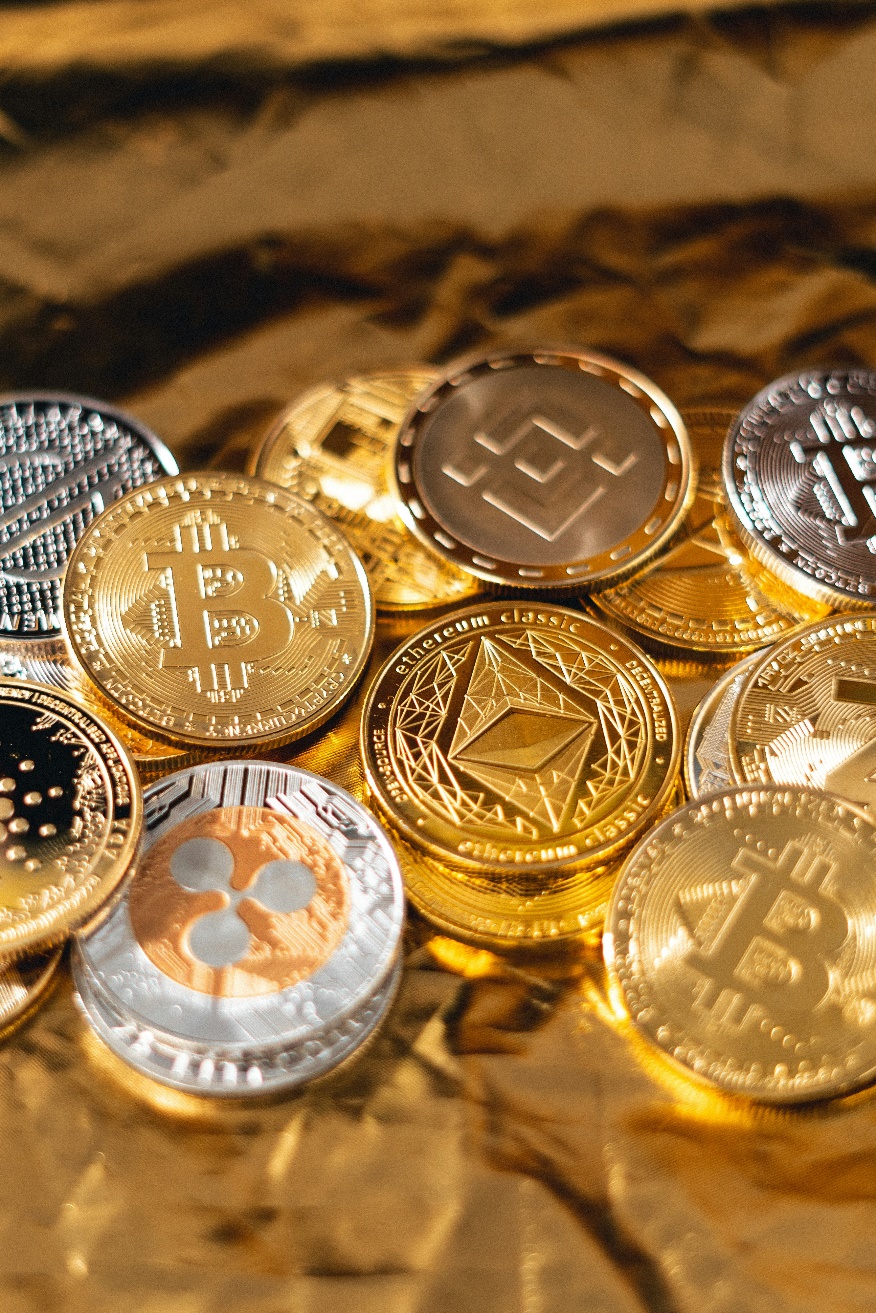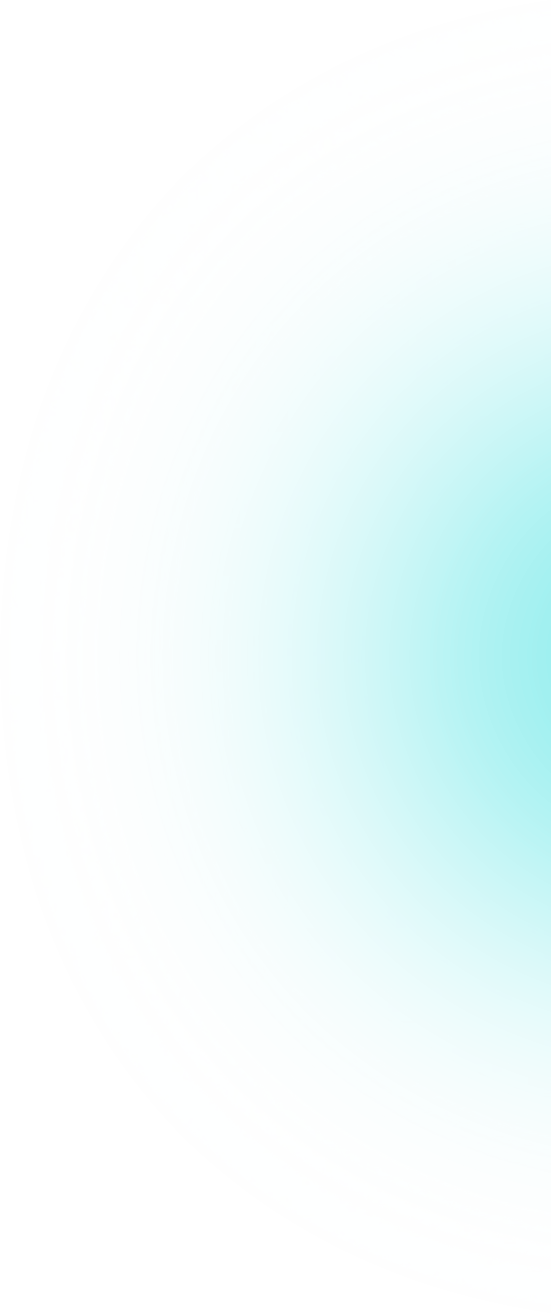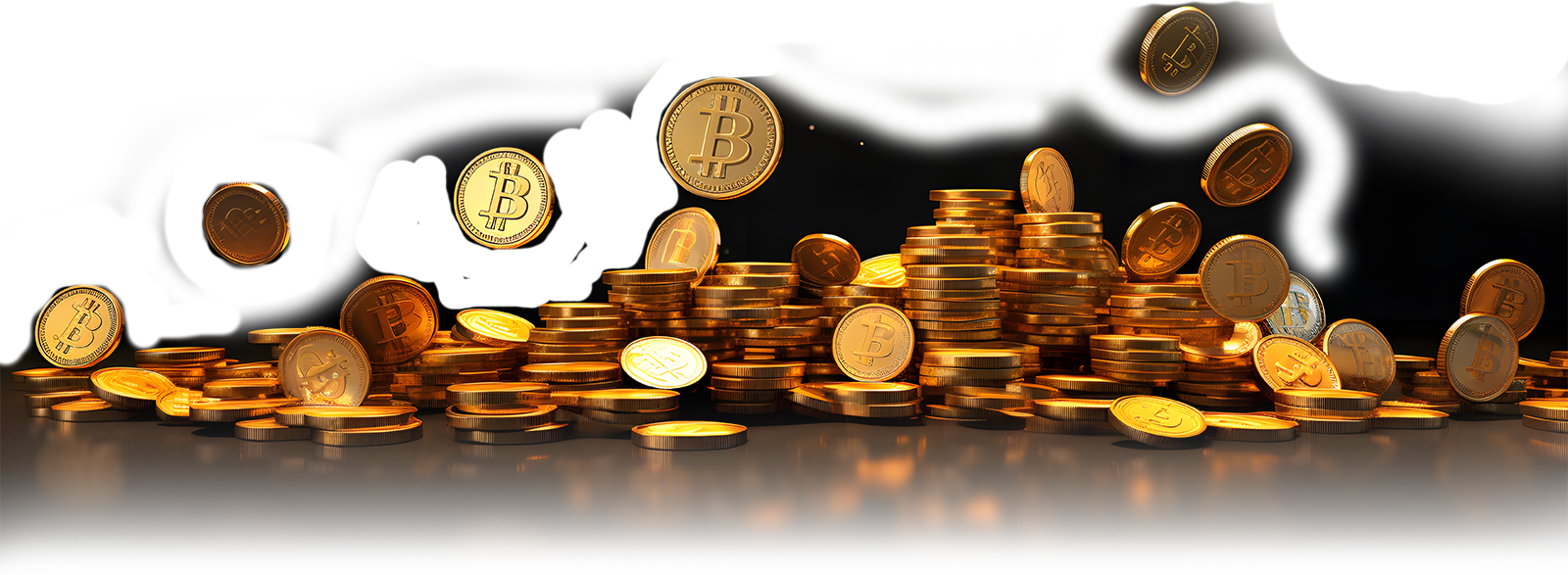





| # | Source | Pair | Volume | Price | Change | Updated |
|---|

| Date | Open | Close | High | Low | Volume |
|---|

Cardano (ADA) is a proof-of-stake blockchain platform that aims to enable “changemakers, innovators, and visionaries” to bring about positive global change. The open-source project’s goal is to redistribute power from unaccountable structures to individuals, helping create a more secure, transparent, and fair society.
Founded in 2017 and named after the 16th-century Italian polymath Gerolamo Cardano, Cardano’s native ADA token takes its name from Ada Lovelace, the 19th-century mathematician considered the world’s first computer programmer. The ADA token ensures that owners can participate in the network’s operation, giving them the right to vote on proposed changes to the software.
Cardano’s layered blockchain architecture, designed for scalability and modularity, allows decentralized applications (dApps) and smart contracts to be developed. It’s already being used in various industries, such as agriculture, education, and retail, to track produce, store tamper-proof credentials, and combat counterfeit goods. In August 2021, the Alonzo hard fork brought smart contract functionality to the blockchain, and over 100 smart contracts were deployed within 24 hours.
Cardano (ADA) operates as a decentralized, proof-of-stake (PoS) blockchain platform, designed to ensure scalability, security, and sustainability. It works by utilizing a layered architecture, separating the settlement layer (which handles ADA transactions) from the computation layer (where smart contracts and decentralized applications (dApps) run). This structure allows greater flexibility and the potential for future updates without disrupting the entire network.
The network is powered by the Ouroboros PoS protocol, which allows users to participate in the network’s consensus mechanism by staking their ADA tokens. Cardano validators, also known as “stake pool operators,” are responsible for securing the network, processing transactions, and validating new blocks based on the amount of ADA they have staked. The more ADA tokens staked, the higher the chance of being selected to create a new block.
Cardano’s smart contract functionality, introduced through the Alonzo hard fork in 2021, enables developers to create decentralized applications (dApps) on the platform. It supports the use of smart contracts in a modular, scalable way, empowering users and businesses to leverage blockchain for real-world use cases, such as supply chain management, secure identity verification, and financial services.
Cardano (ADA) stands out in the blockchain ecosystem due to several key features that differentiate it from other platforms:
Proof-of-Stake Consensus (Ouroboros Protocol): Cardano uses a highly secure and scalable proof-of-stake (PoS) protocol called Ouroboros, which is designed to be energy-efficient while maintaining a decentralized network. Unlike proof-of-work (PoW) systems, PoS allows ADA holders to participate in the network’s security and governance by staking their tokens, earning rewards in the process.
Layered Architecture: Cardano separates its settlement layer (responsible for transferring ADA) from its computation layer (where smart contracts and decentralized apps are executed). This structure enhances scalability, flexibility, and the ability to upgrade the platform without causing disruption to existing services.
Decentralization and Governance: Cardano aims to give its community more control over the development of the platform. Through its treasury system and the voting mechanism of the Cardano community, ADA holders can propose and vote on changes, fostering a more democratic and decentralized governance model.
Sustainability and Interoperability: Cardano is designed with sustainability in mind. Its PoS model ensures energy efficiency, and the platform is focused on creating a blockchain ecosystem that can evolve over time to meet global challenges. Additionally, Cardano strives for interoperability with other blockchains, enabling seamless integration with existing systems.
These features, combined with Cardano’s strong vision to create a more secure, transparent, and fair society, position it as a unique and highly innovative blockchain platform.
Cardano’s Vasil Hard Fork is a significant upgrade to the Cardano blockchain aimed at improving its scalability, interoperability, and overall network performance. Named after Vasil Dabov, a prominent Cardano community member who passed away in 2021, the Vasil upgrade introduced several important changes and improvements to the platform.
Key features of the Vasil Hard Fork include:
Enhanced Smart Contract Functionality: One of the main objectives of the Vasil upgrade was to improve the functionality of Cardano’s smart contracts. By enhancing the Plutus scripting language, it allows developers to write more efficient, cost-effective, and complex smart contracts.
Increased Scalability: The Vasil upgrade aimed to enhance the scalability of the network, enabling Cardano to handle a higher volume of transactions and data more efficiently. This improvement is vital as it increases the blockchain’s capacity to support more users and applications.
Improved Performance of Decentralized Applications (DApps): With improved smart contract capabilities, the Vasil Hard Fork enables DApps to run more smoothly and with greater efficiency, benefiting both developers and users.
New Features for Developers: The upgrade introduced new features and tools for developers, including better opportunities for optimizing smart contracts and more flexibility in building decentralized applications.
Cost Reduction for Transactions: The Vasil upgrade also brought improvements to Cardano’s transaction processing, resulting in lower costs for users and developers transacting on the network.
The Vasil Hard Fork was part of Cardano’s broader strategy to bring enhanced functionality to its platform, paving the way for further development in its ecosystem. It followed the Alonzo upgrade, which introduced smart contracts to the blockchain, and marked another step toward Cardano’s vision of becoming a leading platform for decentralized finance (DeFi) and DApps.
While Cardano (ADA) is one of the most well-regarded blockchain projects, it faces several risks and challenges:
Adoption and Network Effects: Cardano’s success relies heavily on widespread adoption, both for its cryptocurrency and its blockchain technology. The network still faces competition from established blockchain platforms like Ethereum, Binance Smart Chain, and Solana. If Cardano fails to attract a critical mass of developers, dApps (decentralized applications), and users, its growth potential may be limited.
Smart Contract and dApp Development: Although Cardano’s smart contract functionality has been introduced with the Alonzo upgrade, it still lags behind Ethereum and other blockchain platforms in terms of the number of dApps deployed. Developers need to migrate to Cardano and build new projects on its blockchain, which takes time and resources.
Scalability Trade-offs: While Cardano boasts high scalability and energy efficiency through its Proof-of-Stake (PoS) consensus mechanism, there are ongoing concerns about the trade-offs between decentralization and scalability. The network’s decentralization level could be affected if scaling solutions do not achieve their intended outcomes.
Slower Development Process: Cardano’s academic, peer-reviewed approach to blockchain development results in a more cautious, slower rollout of updates and features compared to other blockchain projects. This slower pace can potentially hinder Cardano’s ability to keep up with competitors who are rapidly innovating in the decentralized finance (DeFi) and blockchain space.
Regulatory Risks: As with other cryptocurrencies, Cardano could be affected by regulatory changes in major markets. Governments around the world are scrutinizing cryptocurrencies, and the implementation of stricter regulations could impact Cardano’s growth or restrict its use in certain regions.
Market Volatility: Like most cryptocurrencies, ADA’s price is subject to market volatility. Sudden price swings can affect investor confidence and adoption. In addition, ADA is closely tied to the broader cryptocurrency market, which is influenced by factors like regulation, technological advancements, and market sentiment.
Centralization Concerns: Despite the goal of decentralization, Cardano’s staking system could lead to centralization risks over time if a few large entities control a significant portion of the network’s staking power. This could undermine the security and fairness of the network.
Overall, while Cardano has a strong foundation and vision, these risks and challenges highlight that the project needs to continuously address obstacles to achieve long-term success.
Cardano (ADA) is considered a secure blockchain platform, thanks to several key features and mechanisms built into its design:
Proof-of-Stake (PoS) Consensus: Cardano uses a Proof-of-Stake consensus mechanism called Ouroboros, which is designed to be energy-efficient and secure. Ouroboros was rigorously peer-reviewed before its implementation, providing a solid foundation for the blockchain’s security.
In PoS, the security of the network is maintained by validators who stake ADA to participate in the block creation process, making attacks costly and difficult to execute.
Peer-Reviewed Research: Cardano prides itself on adopting a scientific and peer-reviewed approach to its development. Every aspect of its technology, from the Ouroboros PoS protocol to the design of its smart contracts, undergoes extensive academic scrutiny before being implemented. This helps ensure that the blockchain is robust and resistant to vulnerabilities or attacks.
Decentralization: Cardano aims for high decentralization through its staking model. The more decentralized the network, the harder it becomes to carry out successful attacks, such as 51% attacks, where an entity controls the majority of the network’s validation power. By encouraging decentralization, Cardano enhances its security.
Smart Contract Security: With the introduction of smart contracts through the Alonzo upgrade, Cardano has integrated a custom programming language, Plutus, which is designed with security in mind. Plutus aims to reduce the risk of vulnerabilities in smart contracts by enabling developers to write highly secure code.
Formal Verification: Cardano employs formal verification methods, which involve mathematically proving the correctness of its protocols. This approach reduces the likelihood of bugs and vulnerabilities, as the code is rigorously tested before being deployed.
Overall, Cardano’s emphasis on research, decentralization, and formal methods makes it a highly secure blockchain platform, though, like any system, it is not immune to risks. The project continues to evolve, enhancing its security measures to meet the challenges of a rapidly changing blockchain ecosystem.
Cardano (ADA) has undergone several significant upgrades over the years, each aimed at improving its scalability, functionality, and overall ecosystem. Here are some key upgrades:
Shelley Upgrade (2020): The Shelley upgrade marked the beginning of the decentralization of the Cardano network. This upgrade introduced the ability for ADA holders to stake their tokens and earn rewards, decentralizing the control of the blockchain from a small group of validators to a larger pool of decentralized participants. Shelley increased the decentralization of the network by 50 to 100 times, as promised by founder Charles Hoskinson.
Alonzo Hard Fork (2021): The Alonzo upgrade brought smart contract functionality to Cardano, enabling the network to support decentralized applications (dApps) and decentralized finance (DeFi) projects. This upgrade expanded the network’s capabilities, allowing developers to create and deploy smart contracts and dApps, opening new use cases and increasing the network’s versatility.
Goguen (Smart Contracts and dApps): The Goguen era, introduced with the Alonzo upgrade, enables the creation and deployment of smart contracts and native tokens on the Cardano blockchain. This phase paved the way for DeFi applications to launch on Cardano, adding more value to the ecosystem and increasing its competitive position in the blockchain space.
Vasil Hard Fork (2022): The Vasil upgrade, introduced in September 2022, focused on improving the scalability and performance of Cardano. It increased the throughput of the network and reduced transaction costs, making the platform more efficient for dApps and DeFi projects. The upgrade also enhanced Cardano’s ability to handle smart contract executions and decentralized applications at scale.
Ouroboros (Consensus Protocol): Cardano’s unique Ouroboros consensus algorithm, which underpins its Proof-of-Stake (PoS) model, was continuously refined to improve the network’s performance and sustainability. Ouroboros ensures security, scalability, and decentralization through mathematically verified protocols.
These upgrades demonstrate Cardano’s commitment to scalability, security, and functionality, positioning it as a leading blockchain platform for decentralized applications and smart contracts. With each upgrade, the network continues to expand its capabilities, making it an attractive option for developers and users seeking a reliable, energy-efficient blockchain solution.
The Cardano (ADA) token plays a vital role within the Cardano blockchain ecosystem. Below are the main features of the ADA token:
Native Cryptocurrency of the Cardano Blockchain
ADA is the native cryptocurrency of the Cardano blockchain, designed to fuel the network’s operations, facilitate transactions, and enable smart contract execution. It serves as a store of value and can be used to pay for transaction fees, staking rewards, and more.
Staking and Proof-of-Stake (PoS) Consensus
ADA operates on the Proof-of-Stake (PoS) consensus mechanism, where holders can stake their ADA tokens to secure the network, validate transactions, and participate in the network’s consensus. Staking ADA allows token holders to earn rewards proportional to the amount of ADA they stake. This PoS model is much more energy-efficient compared to Proof-of-Work (PoW) models used by other cryptocurrencies like Bitcoin.
Voting and Governance
ADA holders have the ability to participate in the governance of the Cardano blockchain through a process called Project Catalyst. By staking their ADA tokens, users can vote on proposals for future network upgrades, development initiatives, and governance decisions. This decentralized governance allows the Cardano community to play an active role in shaping the future of the network.
Transaction and Smart Contract Facilitation
ADA is used to pay for transaction fees and smart contract execution on the Cardano blockchain. When users interact with the blockchain, whether sending ADA or executing a smart contract, they must pay a transaction fee in ADA. This incentivizes validators and helps maintain the security of the network.
Scarcity and Token Supply
The total supply of ADA is capped at 45 billion tokens, with a portion of this supply gradually released through staking rewards and network incentives. This fixed supply creates scarcity, potentially increasing the value of ADA over time if demand increases.
Security and Stake Delegation
ADA is integral to the security of the Cardano network. Through staking, ADA token holders can delegate their tokens to pools, allowing them to contribute to the network’s security and validation process. By doing so, users participate in securing the network without needing to run a full node themselves.
Cross-Platform Interoperability
The Cardano ecosystem aims for interoperability with other blockchains, and the ADA token is a key part of that vision. By enabling bridges to other blockchain networks, ADA could be used in cross-chain interactions, increasing its versatility and role in decentralized ecosystems beyond Cardano.
The ADA token is a central component of the Cardano blockchain ecosystem. It serves as the foundation for the network’s security, staking rewards, governance, and transaction processing. With its role in enabling decentralized finance (DeFi), facilitating smart contracts, and contributing to the network’s energy efficiency through Proof-of-Stake, ADA has established itself as a key player in the blockchain space.
Buying Cardano (ADA) is simple, and you can purchase it from various cryptocurrency exchanges. Here are the steps to acquire ADA:
Choose a Cryptocurrency Exchange: First, you need to select a platform that supports Cardano (ADA). Some of the most popular exchanges that offer ADA include:
Create an Account: Once you’ve chosen an exchange, sign up for an account. This will typically require providing some personal information and completing identity verification (KYC) for security and regulatory purposes.
Deposit Funds: To purchase ADA, you’ll need to deposit funds into your exchange account. You can use a variety of payment methods, such as:
Buy ADA: After funding your account, search for ADA on the exchange, select the amount you want to purchase, and place an order. You can opt for a market order (which buys at the current market price) or a limit order (where you specify the price you’re willing to pay for ADA).
Store Your ADA: Once you’ve purchased ADA, you can leave it on the exchange or transfer it to a more secure wallet. There are two main types of wallets:
Staking ADA (Optional): After acquiring ADA, you may also choose to stake your tokens to participate in the Cardano network’s consensus mechanism and earn staking rewards.
Buying ADA is a straightforward process involving choosing an exchange, funding your account, and placing an order. For long-term security, it’s recommended to store your ADA in a private wallet. Additionally, by staking ADA, you can participate in the network and earn rewards while contributing to the Cardano ecosystem’s decentralization.
Seamlessly connect with Kenson Investments for specialized assistance on your digital asset journey.


Kenson Investments excels in digital asset management, serving high-net-worth individuals and businesses. We prioritize security and transparency, offering tailored solutions for asset management, diversification, and innovative investment opportunities in the expanding digital asset sector.
Disclaimer: The crypto currency and digital asset space is an emerging asset class that has not yet been regulated by the SEC and US Federal Government. None of the information provided by Kenson LLC should be considered as financial investment advice. Please consultant your Registered Financial Advisor for guidance. Kenson LLC does not offer any products regulated by the SEC including, equities, registered securities, ETFs, stocks, bonds, or equivalents.

Copyright © 2024 Kenson Investments. All Rights Reserved.